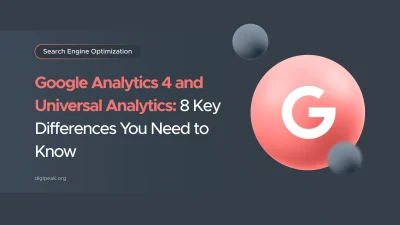
Yandex Leak: Top Search Ranking Factors List
Like any other data leak, Yandex is in a very tough spot. What happened is …
28/02/2023 -
15 dk okuma
Stay up to date with Peakers
Market research is the process of gathering information about your business’s market, target audience, and customers to determine how viable and successful your products or services will be.
Those who want to enter the e-commerce sector and establish their own e-commerce site should conduct market research and obtain some information about the sector. By conducting market research, you can observe the current state of the sector, its future and the competition in the sector; so you can decide whether this sector and market are suitable for investment.
Market research helps you better understand your market, which consists of your potential customers and identifies their main needs, interests and problems.
It also helps you to structure your marketing strategy, generate leads and appeal to your target audience with the right content and products. In addition, it has a big role in target audience identification.
I think every new product, service, and business should start with market research. It doesn’t matter if you have the biggest, most beautiful, most elegant product ever made if no one is going to buy it.
Good market research tells you who you will sell the product or service to, why they will buy it, what problems you will solve for them, what objections they will have, what price points they are willing to consider, and what other options they currently have.
Whether your business has been around for decades or you are a new entrepreneur, market research results are critical information. If you don’t understand how your business fits into the world your customers live in, you won’t be able to find the right audience for your target market or market effectively.
Here are a few questions to consider when thinking about your target market
Answering these questions will help you get on the right track with your market research, but they are just the beginning. Every market is very different, so your research journey will inevitably take you in unexpected directions.
To make the process easier, conducting market research can be broken down into the following steps:
Now that we’ve discussed why market research is so important and how it fits into your overall business strategy, let’s talk about a few different ways to approach market research.
Essentially, there are two basic ways to conduct market research. Both of these approaches provide value in different ways and it is generally a good idea to use both whenever possible.
The first way to do market research is to get data from a variety of sources. If you already sell products or services, look at your customer data. Who is buying your product? What kind of marketing messages do they respond to? What trends has your sales team noticed?
Online platforms like Google Analytics, Facebook Insights, advertising campaigns, or research databases are other good sources of information. Your own market data can give you many insights into your market. If you can find them, market reports, research, online reviews, and even online forums can also be a great place to learn about the market and your competition.
The second way to do market research is to talk directly to your target audience. Many big businesses use focus groups and survey responses to understand what their target audience wants. These are great, but unfortunately, it is very difficult to find your portfolio of real customers.
This type of research is an invaluable way to get inside the heads of your customers, but it’s important to remember that the sample size will be small, so your data can easily be skewed by a few opinionated individuals. This is why it is always best to use both approaches. This way, your up close and personal insights are balanced with big-picture data, and vice versa.
Start market research by creating customer personas. There are many templates you can download that will help you identify what your target audience looks like. A persona will also help you discover how to effectively advertise to them by knowing which social media platforms they frequent and spend money on, so you can determine how to create your content and come up with better products that will meet your customers’ needs and solve their problems. .
Creating a detailed profile of your ideal customer will ensure optimal ROI with enough data based on how they will respond to the right product at the right time.
Facebook is a very useful market research tool that is cost-effective and reveals user engagement that can help identify how your target audience behaves. This can make for a very effective advertising campaign. Many businesses on social media provide easy access to user data.
If you have a business account, you can access the demographic page of the target audience and filter your research by gender, age, page likes, location, activity, household, purchases, etc., so you can set different paradigms for different target audiences and run tests to further refine your customers’ personas.
Facebook’s Ads platform allows you to create custom ads to target very specific groups, and you can also create custom audiences by uploading email list segments to Facebook and accessing profiles of similar customers.
In addition to direct market research, it is also important to take the competition into account. There are several reasons for this:
1) You need to understand what you are up against
2) You can learn from what your competitors are already doing.
The most interesting thing about your competitors is that they are a successful model for you to follow. If their business is successful, they are definitely doing something right.
But, assuming that they are not just trying to copy your competitors (which I see happening all the time), you should also be able to find gaps and opportunities.
The better you know your competitors, the better you know your market. Look at their ads on Facebook, Instagram, and Google. Look at their websites. Visit their physical stores. Buy their products or try their services. Read their reviews.
As you go through all of this, here are a few things to look out for:
If you take the time to get to know your competitors, you can get all kinds of insights and ideas to try. Even if your product or service is quite unique, if a competitor’s product addresses a similar need or problem, you can often learn from their products, services or marketing strategies.
For better or worse, your competitors have a lot to learn about your target audience and how to motivate them to buy from you. They may not all be directly relevant to your business, but your competitors are part of the world your customers live in.
What makes you a competitor to other companies is that you share the same audience, so once you have completed a full customer persona and have a better understanding of who your ideal customer is, you can research how your competitors market to that audience and the strategies behind and how to attract them.
Here are some user-friendly online tools you can use to see your competitors’ site behavior and how they use their tools for optimal results:
It gives you insight into how your competitors are ranking on Google. It adds occasional features including competitive analysis, keyword research, backlink research, content research, rank tracking and web tracking.
Find out what digital marketing tools your competitor uses on their website and what technologies are used on the site.
A great tool for tracking your competitor’s content strategy. Information such as what kind of content they produce, which posts get more shares, etc. can help you create your content strategy. Just type in the address of your competitor’s blog site.
A website where you can do SEO analysis for free. You type in your competitor’s site and Woorank does the rest of the work for you. Of course, you need to have SEO knowledge to evaluate these results.
It allows you to create an account to download a comprehensive report on any competitor’s URL. It reveals spam scores, competitor backlinks, and broken links on your site and also helps you find link-building opportunities, lets you analyze anchor text, and more.
It helps you understand how to best reach, engage and measure your audience’s behavior on social media.
This website is a tool that calculates the engagement rate your competitor receives after typing in their Instagram account. It also tells you how many likes and comments each post gets on average.
Similarweb is a tool that tracks the number of monthly visitors to websites. It also shows the words that your competitor gets the most traffic from at a certain level.
On the other hand, it also shows the percentage of your competitor’s traffic channels. In other words, how much of the total traffic comes from search engines, how much from advertising, how much from direct searches, and how much from social media. This data can give you insights into your competitor’s strategies and areas of investment.
Simply put, no matter how well you understand your target market, if you don’t understand the competitive landscape around you, it will be difficult to market your business. Good marketing takes into account every aspect of your customer experience and your competitors are part of that experience, so it would be foolish not to keep a close eye on what they are doing.
Google Trends is a very important source of information about what internet users, and therefore your potential customers, are searching for on a daily basis. You can see by country and city how often a word is searched and where, and what other words are of interest to those searching for these words.
You may be interested in: What is Google Trends and How to Use It?
Tableau is a data visualization tool that provides connectivity to your data and files, helping you see and understand your analysis, visualization, business intelligence and market research results. With colorful graphs and tables, you can create an interactive and shareable dashboard with trends and variations.
If the eyes are the mirror of the soul, Google Keywords is the mirror of the internet. This Google tool shows you the volume of keyword searches, how competitive these keywords are and how keywords are related to each other. If you want to learn about the mental associations consumers have between products, concepts and events, you can easily find it here. To get started, you need to create a free AdWords account.
Social Mention is a real-time search platform that coaches you on what’s trending in the social media world. It aggregates user-generated content from around the world in a single stream. With more than 80 social media features, you can see your strength or the likelihood of your brand being seen in the market with lots of data.
Think with Google looks at digital marketing insights using only Google’s data. It’s a vast resource with everything from high-level insights to ready-made statistics and handy tools. You can gain insights into the data Google is discovering and the trends they’re tracking, different customer behaviors, new technologies and industry trends, with a forward-looking perspective and behind-the-scenes data to look at digital marketing methods across platforms and audiences.
Sometimes it feels good to deal with raw data. R Studio requires some coding knowledge, but is a unique tool for creating custom statistical analyses. It allows you to create statistical calculations and graphs. This tool is an open source development environment. Being open source means that it is constantly being improved and enhanced by the data analysis community that uses it.
The platform provides access to 25 million users from different parts of the world. In this way, you can send surveys to your target audience and get their opinions instantly. With AYTM, you have the opportunity to see the survey results instantly. Moreover, you can see full demographic information, comprehensive statistics and optional cross-analysis information.
Another application that allows you to reach the target audience with survey management is Proved. It allows you to test your ideas on your target audience. Therefore, when you write your designs that are at the idea stage, which have not become the final product, or your products or services related to your business on this platform, the platform creates a survey for you and directs you to the most appropriate audience.
The key to competing and outperforming your competitors is to keep track of what they are doing. You can do this very easily with Similar Web.
This platform is a consumer barometer provided by Google. Here you can access statistics about people’s daily behaviors and habits, such as internet usage, online shopping, etc.
Owning a small business and growing it into something bigger and more effective requires constant research and strategy. Once you have identified your target audience and made an effective sales pitch, you cannot rest on your laurels and expect the success of your business to continue on its own.
Business plans need to be constantly developed and refined to prevent your business from stagnating and offering your customers items that are no longer relevant or useful.
Monitor the market carefully and keep an open mind to accept the changes and challenges that will come with the tide of customer engagement. The trick is to never get discouraged and know how to use all available tools to experience the highest amount of growth.
No matter what industry you are in or what you sell, your market is the lifeblood of your business. Without customers, your business cannot survive. If your customer base is not an important part of every decision you make, you won’t have to worry about making business decisions.
So, whether you are in the product development stage or trying to figure out how to improve your marketing, take a step back and make sure you take the time to think about your target market first. Otherwise, even if you offer a great product or service, there will be no one to buy it.
By the way, if you would like help with your marketing research and strategy, let us know here or in the comments. We would love to help!
How do you approach market research? Do you have any useful tips to share? Leave your thoughts in the comments below.
Get an Offer


Join Us So You Don't
Miss Out on Digital Marketing News!
Join the Digipeak Newsletter.
Related Posts

Like any other data leak, Yandex is in a very tough spot. What happened is …

Before transitioning to Google Analytics 4 (GA4) or making any installations, you should be aware …

Are you a marketing agency or other online consultant agency managing Google Ads (formerly Google …